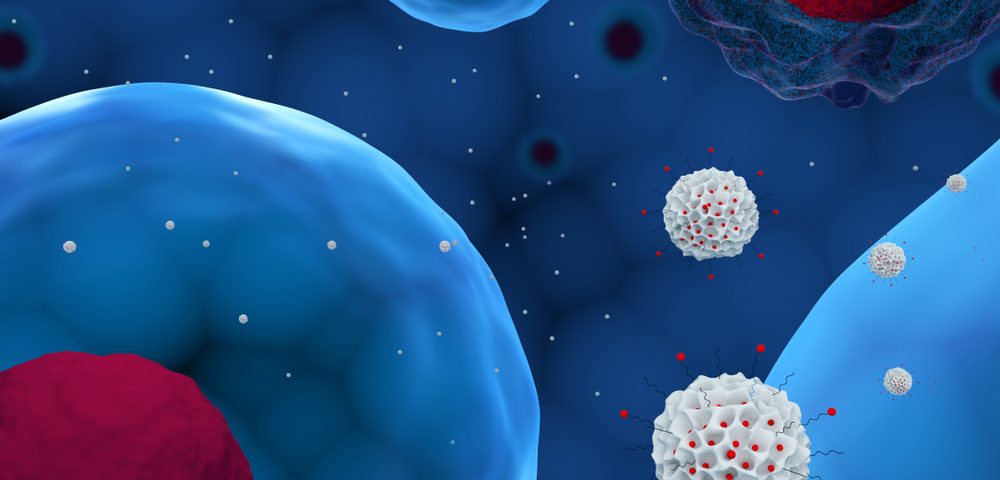Mesenchymal stem cells — cells that can give rise to many cell types and travel to tumor sites — can reduce the capacity of breast cancer cells to spread to other regions in the body, according to an early study using a new laboratory model.
The study, “Determining Conditions for Successful Culture of Multi-Cellular 3D Tumour Spheroids to Investigate the Effect of Mesenchymal Stem Cells on Breast Cancer Cell Invasiveness,” was published in the journal Bioengineering.
Mesenchymal stem cells (MSCs) are a type of stem cells found predominantly in the bone marrow, which are able to renew themselves and give rise to multiple cell types, including bone, cartilage, muscle, and fat cells. For that reason, they are important for regenerating and repairing damaged areas in the body.
Multiple studies have implicated MSCs in tumor development and metastasis, or the spreading of cancer cells from a primary tumor to other tissues and organs in the body via the blood or lymphatic system.
Though MSCs naturally migrate toward “invasive” tumors, meaning tumors with a high capacity to spread, how both cell populations interact and affect each other is still unclear.
Prior studies have provided conflicting information, with some finding that MSCs promote metastasis and others concluding that they prevent it from happening.
In this study, researchers set out to tackle this question by using a new, three-dimensional (3D) laboratory model that could provide a more accurate picture of the natural environment where MSCs and cancer cells meet each other in the human body.
Cancer models used in research typically consist of two-dimensional cultures (where cells grow flat and side-by-side on a dish) or tumors growing in mice. But these models are likely unreliable for measuring cell-to-cell interactions.
Tumors are not flat, and cancer cells don’t just touch other cells on their sides but make contact all around them. Growing tumors in mice also does not exactly reflect what happens in humans.
To create 3D spherical tumor models, the researchers mixed, or co-cultured, human MSCs with an extremely invasive breast cancer cell line, and suspended this mix in droplets on a culture dish.
Once “spheroids” were formed, they were embedded into the jelly-like matrix which mimics the breast cancer environment and were left there to grow.
Using this model and measuring the length of cancer cell projections out into the matrix — a measure of invasiveness — the team found that the presence of MSCs dramatically reduced the metastasis of breast cancer cells.
“Continuing to investigate the interaction between hMSCs [human MSCs] and cancer cells in 3D systems is now essential to further understanding this relationship and the impact of the tumor microenvironment on metastasis,” Marie-Juliet Brown, the study’s lead author and a Loughborough University PhD student, said in a press release.
“I hope my research enables us to further understand the relationship between hMSCs and breast cancer cells in order to develop new therapeutic methods to prevent breast cancer metastases,” she said.
Building on these latest findings, Brown is now investigating how exercise influences the relationship between MSCs and cancer cells, and if physical activity can help reduce the spread of breast cancer.
“The future of in vitro modeling is in three — or more! — dimensions and we’re excited to be bringing our unique spin on this — co-culturing breast cancer cells with hMSCs and seeing what effect exercise may have on this interaction,” said Mhairi A. Morris, PhD, one of the senior researchers involved in the study.
This project was also important for breast cancer research because it helped determine the best conditions to create 3D spheroid models, which can be used to provide new insights about this type of cancer.

